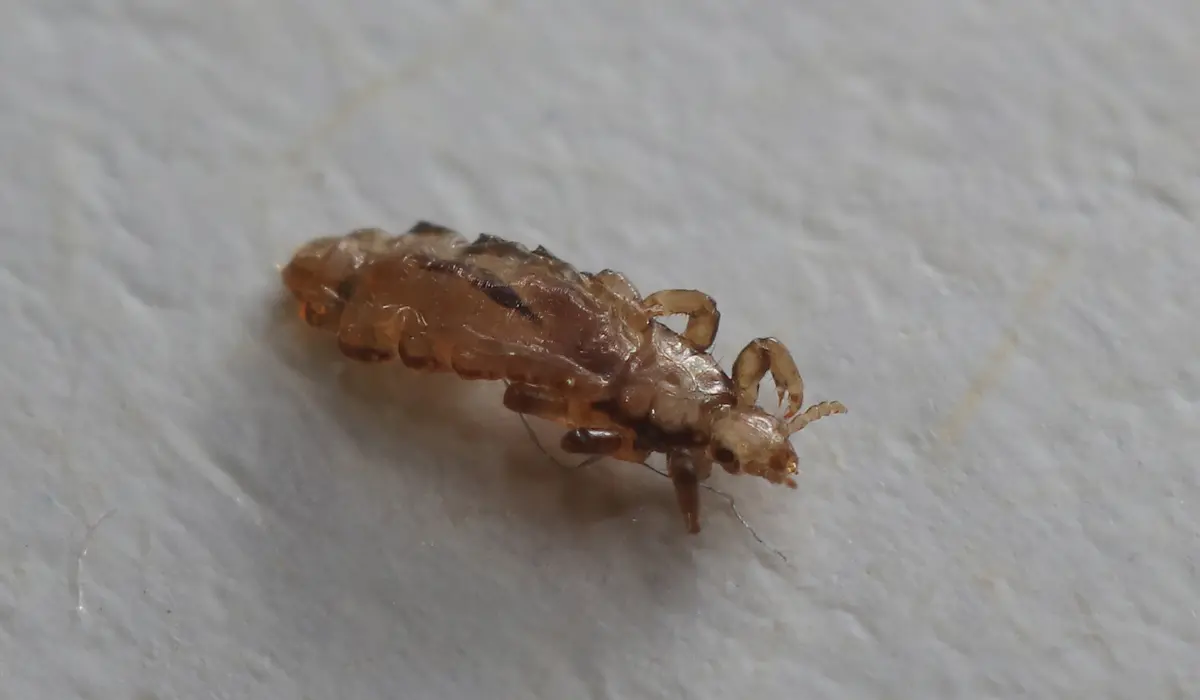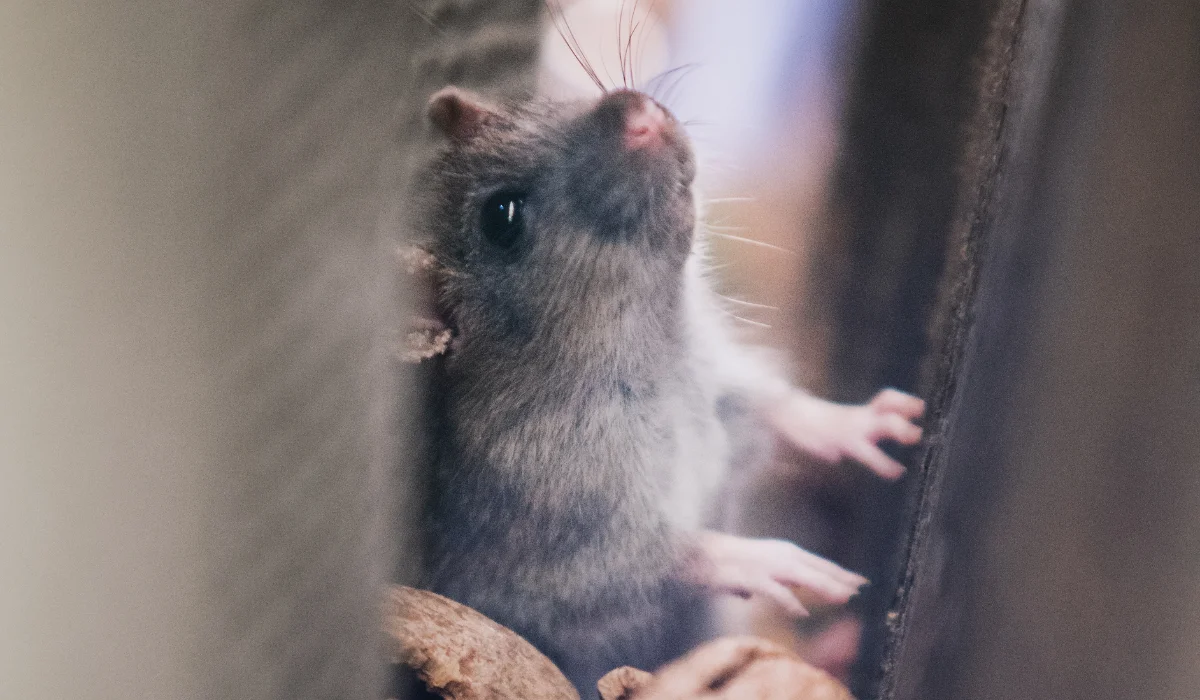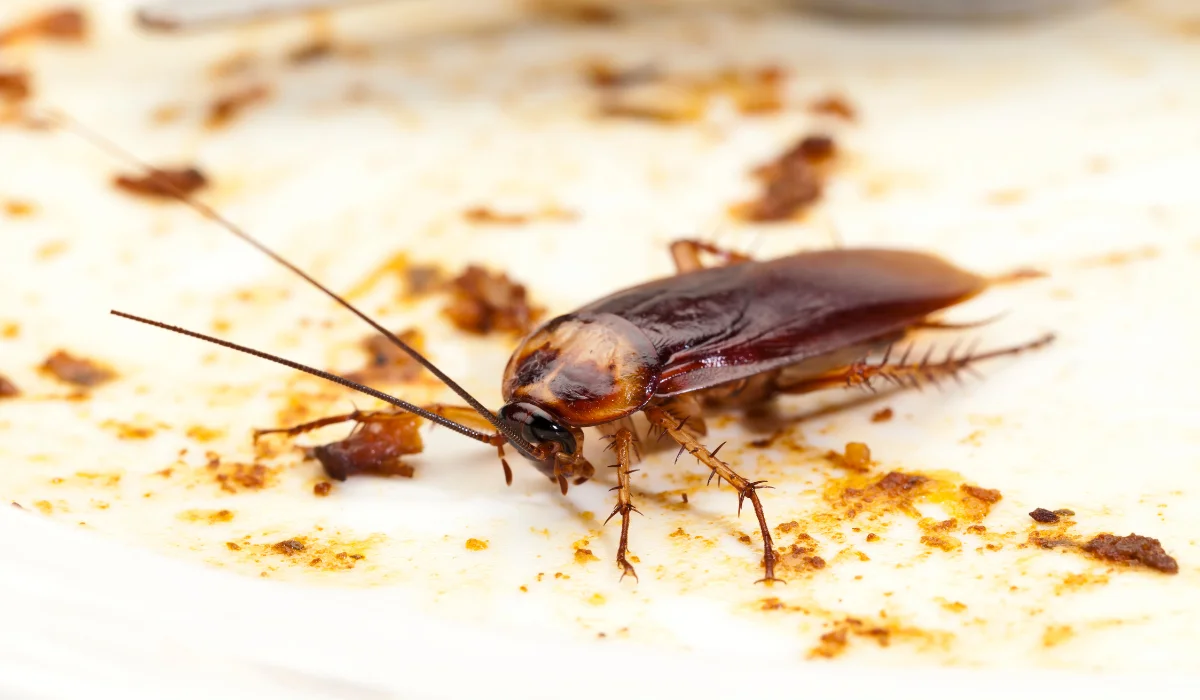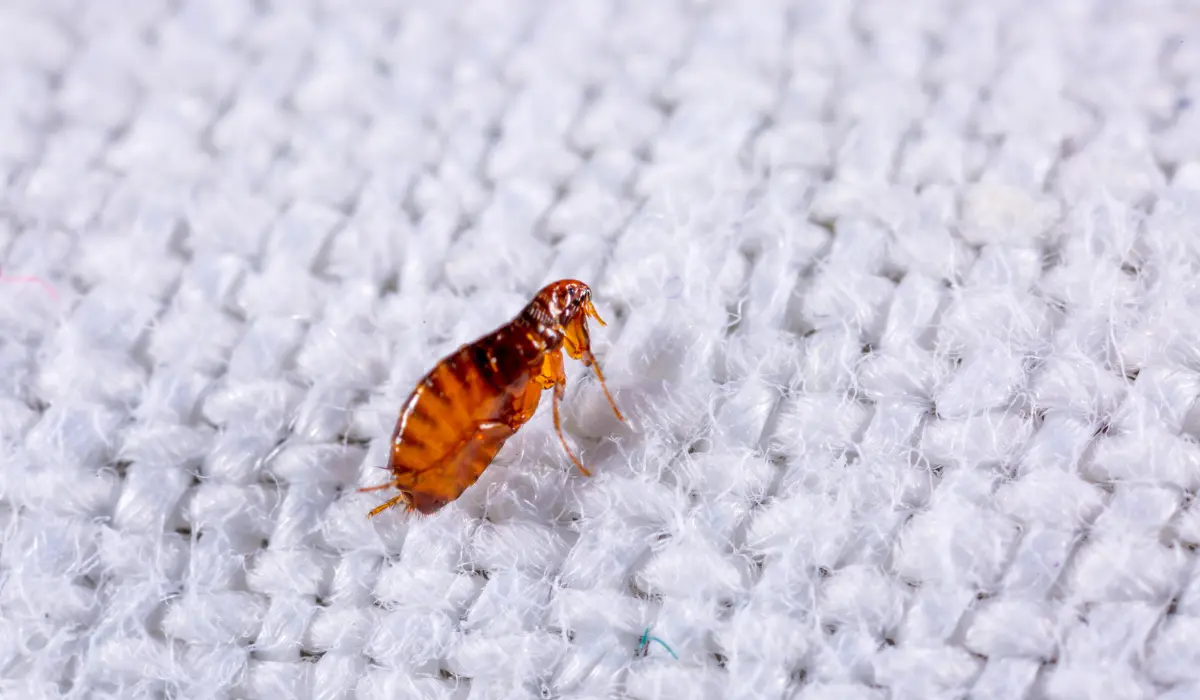Got an itch you just can’t scratch? It might be lice or bed bugs—two pests that love to make us squirm. Different as night and day, these bugs need different battle plans.
Lice hang out on your scalp, causing severe itchiness when they bite. On the other hand, bed bugs prefer hiding in mattress seams and coming out at night for a blood meal.
So, which one’s bugging you? Stick with us to learn how to spot them and kick them out for good!
Key Takeaways
- Lice are small, wingless parasites that cling to human hair and skin, feeding on blood and causing discomfort.
- Bed bugs are elusive insects that thrive in domestic environments like bedrooms and feed on human blood, usually at night.
- Lice attach directly to the body, whereas bed bugs are found in furniture and only approach humans to feed.
- Signs of infestation include physical sightings of the pests, itchy bites, and evidence such as eggs or fecal spots.
- Addressing an outbreak involves using targeted treatments for each pest type, thorough cleaning, and possibly professional extermination for severe cases.
WHAT ARE LICE?
Lice are tiny, parasitic insects that live on the human body and feed on human blood. They are known for infesting their human hosts, causing pediculosis and typhus.
Lice boast features that make them especially adapted to clinging onto human hair and skin. Here’s a closer look at their physical attributes:
- Size: about the size of a sesame seed
- Color: can be tan to grayish-white
- Shape: oval and flattened from side to side
- Wings: no wings
- Legs: six legs, each with claws, perfect for clinging to hair
- Mobility: cannot fly or jump but crawls quickly
Common Types of Lice
As humans, you can be infested by three primary types of these wingless insects: head lice, body lice, and pubic lice. Each type targets a different area and has distinct features.
| Type | Preferred Host Area | Unique Characteristics |
| Head Lice | Scalp and hair | Most common among school-aged children |
| Body Lice | Clothing and bedding | Associated with clothing and poor hygiene |
| Pubic Lice | Hair in the pubic area | Resemble tiny crabs and can spread through sexual contact |
They are spread through direct contact with a lice-infested person or sharing personal belongings.
The Centers for Disease Control and Prevention (CDC) provides guidelines on treatment and healthcare for those affected by lice.
WHAT ARE BED BUGS?
Bed bugs are small, elusive pests that thrive in domestic environments, particularly bedrooms. They can cause infestations in hiding places such as mattress seams, box springs, bed frames, couches, and headboards.
Bed bugs are comparable in size to an apple seed, which allows them to squeeze into tiny crevices. Here’s a list detailing their appearance and habits:
- Size: About 4-5 mm in length
- Color: Reddish-brown
- Shape: Oval-shaped and flat
- Odor: They can emit a musty odor
- Wings: No wings
Lifecycle
The lifecycle of a bed bug includes several stages: egg, nymph, and adult. The transition from one stage to the next is predicated on feeding and molting.
Here’s a closer look at these stages:
| Stage | Description |
| Egg | White, oval, 1mm in size, usually found in hidden locations. |
| Nymph | Has five molts before becoming an adult, requires blood meals to progress to the next stage, and sheds skin. |
| Adult | Fully grown, requires blood meals for survival and reproduction, and can live from several months to about a year. |
LICE VS BED BUGS: KEY DIFFERENCES
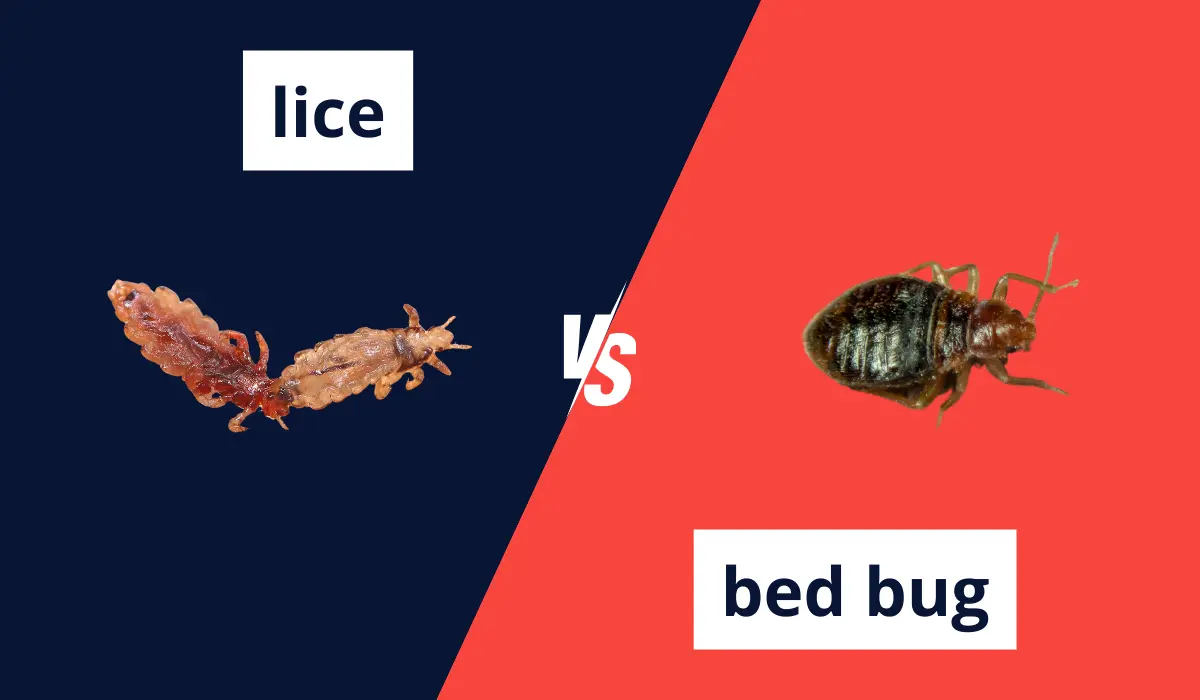
Although both parasites look similar (though lice are much smaller) and feed on blood meals, they present distinct physical features and behaviors. Hence, correct identification of the two is crucial for effective pest control.
Physical Features
While both may become redder after feeding on blood, here’s how these two blood-sucking insects differ in physical features:
| Feature | Lice | Bed Bugs |
| Size | 2-3 mm in length | 5 mm in length |
| Color | Tan to greyish-white | Reddish-brown |
| Shape | Oblong, without wings | Oval, flat, wingless |
| Distinctive Mark | Nits (eggs) attached to the hair shaft | Rusty spots of excrement on bedding |
Habitat and Behavior
Understanding their preferred habitats and feeding behaviors is crucial as you explore the differences between lice and bed bugs.
Here’s a closer look to help you see where each pest thrives and how they behave in their environments:
| Habitat | Lice | Bed Bugs |
| Preferred Location | Human scalp | Mattresses, bed frames, furniture |
| Feeding Behavior | Stays on host | Feeds and then retreats |
WHAT ARE THE SIGNS OF INFESTATION
Recognizing the signs of bed bugs or lice involves observing specific signs. Insight into these indicators can help determine the presence of these pests.
Identifying the Signs
You can often tell if you’re dealing with lice through the appearance of small, brown insects on the scalp or body, along with fine, off-white eggs (nits) attached to hair strands.
Common signs of a lice infestation include:
- Itchiness: Persistent itching on the scalp or body where lice are present.
- Lice on the scalp: Sightings of lice moving close to the skin or in hair.
For adult bed bugs, the signs are more related to the environment and the physical reactions they cause:
- Itchy bed bug bites: Small, red, and often lined up in rows on the skin.
- Blood stains: Rusty or reddish spots on bed sheets or mattresses.
- Fecal spots: Dark, bed bug excrement on bedding or walls.
Signs of an allergic reaction or welts may not be immediately apparent but can include swelling or intense itching at the bite site.
HOW TO DEAL WITH AN OUTBREAK
Effectively tackling an infestation means using the right tools and strategies for lice or bed bugs.
Treating a Lice Infestation
When you have lice, it’s all about stopping those little critters in their tracks. Getting rid of them typically starts with a good comb-out and some readily available treatments.
| Action | Details |
| Apply Treatment | Start by applying an over-the-counter lice treatment to the affected person’s hair. Follow the specific product’s instructions carefully. |
| Comb Out | After treatment, use a fine-toothed lice comb to remove lice and their eggs from the hair meticulously. |
| Wash Clothing and Linens | Wash the person’s clothing, bed linens, and towels in hot water to kill any lice that may have transferred. |
| Seal Non-Washable Items | Seal items that cannot be washed, such as stuffed animals, in a plastic bag for two weeks to eliminate all lice and nits. |
| Seek Prescription Treatments (if needed) | If over-the-counter treatments are ineffective, consult a healthcare provider for prescription options. |
| Prevent Spread | Avoid direct contact with the affected person’s hair and belongings to prevent lice from spreading to others. |
Managing a Bed Bug Infestation
Bed bugs are sneaky little pests that require a multi-front battle to get under control. Professional pest management may be necessary, but you can also take steps home.
- Seek the help of a professional exterminator to identify and treat the infestation with appropriate pesticides.
- Carefully inspect all areas and vacuum the premises thoroughly to remove bugs and eggs from crevices.
- Encase mattresses and pillows in bed bug-proof covers to trap any remaining insects.
- Wash all bedding, curtains, and clothing in hot water and dry them in the highest dryer setting.
- Consider non-chemical methods such as diatomaceous earth or heat treatments, remembering that these may be less effective than insecticides.
- Repeated treatments and a combination of professional pest management and DIY measures are often necessary for severe infestations.
IS IT TIME TO CALL THE EXPERTS?
When dealing with pesky critters like lice and bed bugs, it’s essential to know when to tackle the problem yourself and when to call in pest control professionals.
If repeated over-the-counter treatments aren’t working or you wake up with itchy bites and spot them or their droppings, experts come equipped with the big guns.
Whether you’re in New Orleans or Baton Rouge, seeking expert help should be easy. For immediate intervention for a severe infestation, let Lajaunie’s bed bug control specialists tailor a solution that’s right for your home.
For more information about the areas we service, visit our location page.
 By: LaJaunie's Pest Control
By: LaJaunie's Pest Control 